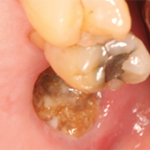Dr. Saag was careful to remind us that fracture risk does begin to increase the longer the time off therapy. Example: Discontinuing alendronate or risedronate for more than two years was associated with increased risk of hip and clinical vertebral fractures in a large observational cohort study of Medicare patients who had been taking bisphosphonates for at least three years.4
“Remember, it’s just a holiday,” he said. “It’s not a complete cessation of therapy. Osteoporotic risk goes up after two years off therapy, and just how much depends on what bisphosphonate [the patient] took before. Some bisphosphonates are stickier to bone than others. Risedronate is the least sticky.”
If you aren’t certain whether a drug holiday is appropriate for your patient, the American Society for Bone and Mineral Research Algorithm for Management of Postmenopausal Women on Long Term Bisphosphonate Therapy may help. Of note, the suggested approach is “based on limited evidence, only for vertebral fracture reduction, in mostly white postmenopausal women and does not replace the need for clinical judgment. It may be applicable to men and patients with glucocorticoid-induced osteoporosis, with some adaptations.”5
In this patient’s case, a holiday was deemed appropriate given improved hip BMD with a T-score greater than or equal to -2.5, no interval fractures and Asian ethnicity conferring a higher risk of adverse events with continued bisphosphonate therapy.
Case 2
A 92-year-old woman with a history of chronic kidney disease (CKD), with glomerular filtration rate (GFR) of 32, and bilateral sacral alar fractures presented to establish care. In the past, she took alendronate, but had been off therapy for many years. Recent DXA revealed a T-score of -3.4 at the femoral neck. Metabolic bone evaluation was notable for a slightly low parathyroid hormone and slightly elevated alkaline phosphatase, consistent with remodeling of recent pelvic fractures. Calcium, phosphorous and 25-hydroxy vitamin D levels were normal.
In this case, Dr. Saag preferred either a parathyroid hormone analog, such as teriparatide or abaloparatide, or romosozumab because the patient was at very high fracture risk. In the Vertebral Fracture Comparisons in Severe Osteoporosis trial, the first active comparator study examining a parathyroid hormone analog (i.e., teriparatide) and bisphosphonate (i.e., risedronate) in a high-risk population, teriparatide conferred a significant risk reduction in people who previously had a major fracture.6
When it comes to parathyroid hormone analogs, clinicians must be aware of a few issues. Parathyroid hormone analogs may cause hypercalcemia, flushing and/or myalgia and arthralgia. The black box warning for osteosarcoma has been removed from both drugs given longitudinal experience, but they should be avoided in patients with a history of skeletal malignancies, bone metastases or skeletal radiation for this reason. Unfortunately, out-of-pocket cost remains prohibitive for many patients, which was also true for this patient. Thus, Dr. Saag opted for treatment with romosozumab followed by denosumab.

